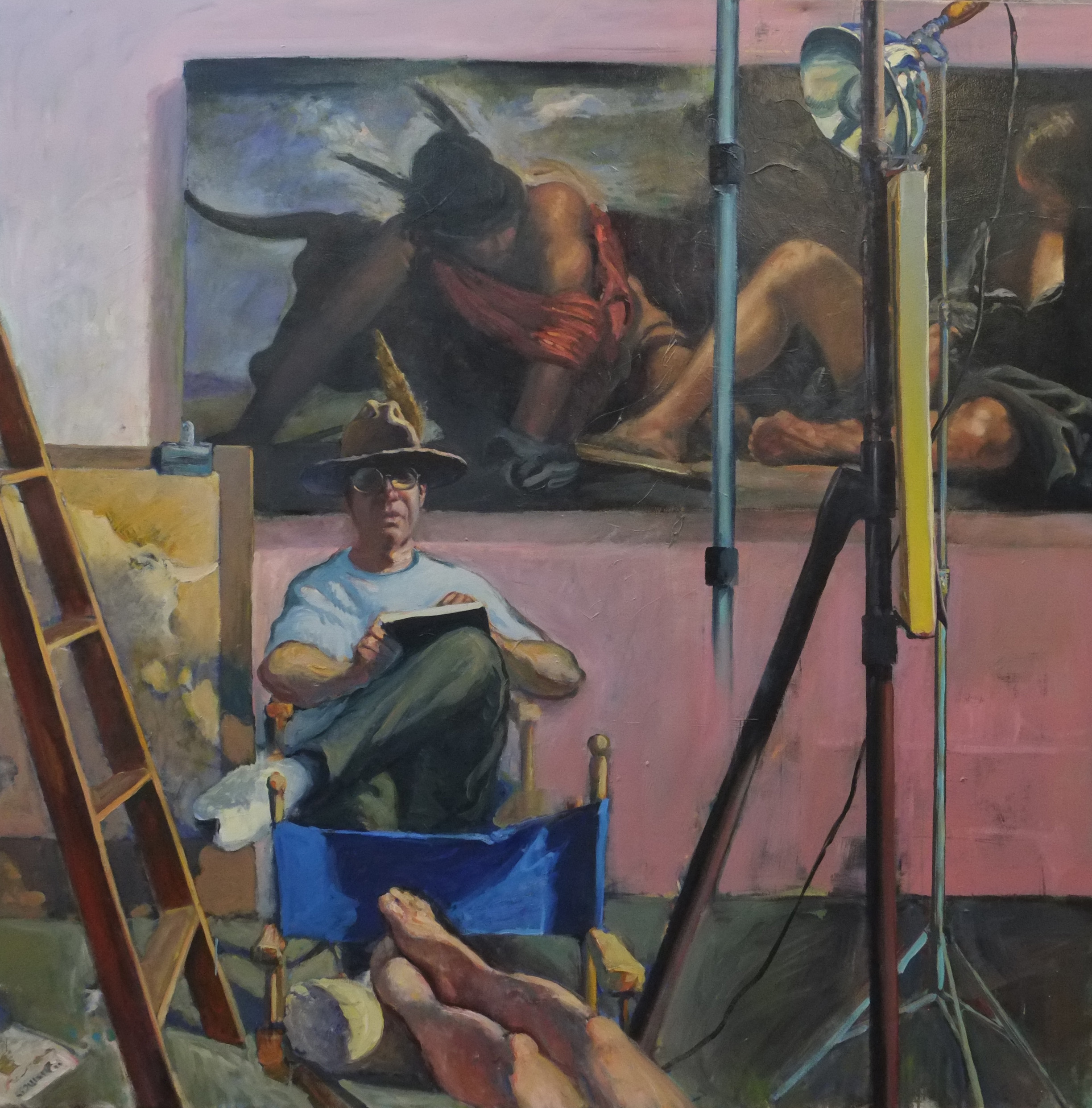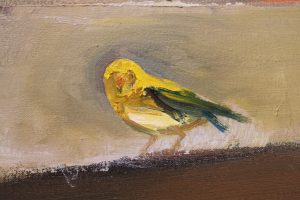When I went to visit William Park in his studio, I found some curious marks on his walls. Aside from the usual paint splatters, there were two phrases written all in caps. One read, “Heightened Awareness”, the other, “Savage Grace.” When you ask him about his work, he uses words like “slobbering” and “gooshing”. His process is visceral, tactile, and there is something savage, and yet graceful, about the way he works.
“When I’m painting and things are really working for me, I have a physical reaction,” he explained,” I feel it in my throat and through my solar plexus.” He couldn’t say why it happens, or even what it’s like, just that it’s “brilliant” and “special”.
“That intensity doesn’t always come right away, and doesn’t come easily. Sometimes it’s there and sometimes it’s not,” he said, “What it comes down to is, I just show up and paint.”

Bill takes a variety of subjects as jumping off points. The painting might initially be of a wave, but it needn’t end as one. “I will often start with realistic images, then they break down from there and become part of the painting.” He pointed out a piece to me that had started out as a still life of a can with some brushes sticking out of it. But gradually it morphed; the can is still there but you wouldn’t know it. An interior became an exterior, a can became a door.
“As I start working, they change; the motivation, the ideas start shifting.” He described how he might turn something upside down or change what was a vertical into a horizontal, there by abstracting the image. “It’s spontaneous, intuitive,” he said, “I want to be surprised.”

Bill also does a lot portraits, often of his friend Fred, who he’s been painting for ten years. ” I think I’ve done some of the best work of my life with Fred,” Bill claimed, ” He’s one of the most authentic people I’ve ever known.”
But the person he’s painted the most is himself. “I’m available, I’m free,” he mused. His largest and certainly longest running self-portrait is titled New Shoes. A 7 x 7 piece of him sitting in his studio.
“I had just bought new tennis shoes, white, bright,” he remembered, “and there was something going on in the world like there usually is, and I realized, here I am in my studio, not a care in the world, while other people are suffering.” He began doing sketches of people in body bags, held prisoner. A year or two later it became something else. “At one point there was a Spanish dancer flying around, but after a while I got tired of that.” Then he started painting Joan of Arc being burned at the stake. “She’s back there behind one of those walls somewhere.”

The only elements that survived this process of transformation were the ladder, him and the shoes. “That took ten years,” he said. It’s been one year since he’s touched it, but it’s not necessarily done. If it’s still in the studio it, “runs the risk of not being done.”
“I like painting. I don’t like finishing paintings,” he clarified, “It’s like finishing a good book or movie. There’s some satisfaction, but the pleasure is in the doing, not the finishing.”

One subject that Bill is known for are his birds. He started painting them around the time that his mother was diagnosed with cancer. “Something about me painting live birds,” he recalled,” connected me with my mother in a way that I hadn’t experienced before.”
He stopped painting them after she died. This wasn’t intentional, but rather a natural response. “They just didn’t have the same meaning for me.”
Recently however, he’s started painting birds again, but in a much more abstracted form. “They have more life than the birds that were more real.” It’s true. The previous birds were lovely, but the new birds that he brings into the gallery are much more energetic.

That energy seems to be at the heart of all of Bill’s work, regardless of subject matter. It’s not enough to create a picture; something needs to be transmitted from him to the viewer.
“It’s important to me that when people look at these paintings, they can feel a human that moved the stuff around, that created this thing, and that you can feel the hand of the artist pushing the brush along.”
While I watched Bill start a new piece, a trowel in one hand and a spray bottle in the other, there was a sense of immediacy about him. There seemed to be a back and forth between him and the material. He’d fling some paint on the canvas, it would slide, he’d spray it, it would drip. I wondered what was going to happen to this canvas, how many years of metamorphosis lied ahead of it. Bill certainly doesn’t know the answer, and doesn’t want to.
To view more works by William Park, click on the link below.